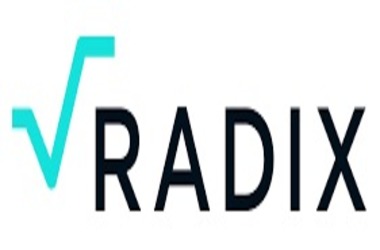
Radix is a decentralized layer-1 protocol that focuses on DeFi apps. DeFi, which translates to ‘decentralized finance,’ is a developing blockchain app that democratizes the availability of financial instruments, eliminating middlemen including banks. Peer-to-peer (P2P) solutions such as crypto lending, savings, and initial-phase investments are made available to DeFi participants without prequalifications, limits, or even other traditional procedures.
Radix was founded five years before by its current CTO and Head of Engineering, Dan Hughes, an accomplished blockchain engineer with a background dating back to 2011. Hughes participated on Bitcoin scalability initiatives in the past, such as Blocktrees (2013), Directed Acyclic Graphs (DAGs) (2015), and Channeled Asynchronous State Trees (CAST) in 2016.
Tempo, which he developed at the start of 2017 and which influenced his conception of Radix subsequently, was the predecessor of Radix. Radix derives a substantial portion of its fundamental philosophy from Tempo, such as the crucial notion of sharding to improve blockchain computational efficiency.
Radix intends to supersede Ethereum as the platform of choice for developers of decentralized apps (dApps). As a consequence, it has released a proprietary Ethereum Virtual Machine (EVM) alternative referred to as the Radix Engine, a Rust-inspired programming language for decentralized application development dubbed Scrypto, and chosen to utilize delegated proof of stake (dPoS) as its consensus protocol.
Notable is that the debut of Radix’s public mainnet occurred in July 2021, four years after the initiative was announced in September 2017. Within this time frame, Radix’s core programmers issued the in-house XRD token on the Ethereum platform in order to assist with fundraising endeavors.
The Radix protocol is made up of three elements. These include:
1. Radix Engine (Execution layer);
2. Cerberus (consensus layer);
3. Delegated Proof of Stake (Consensus mechanism).
The three elements work together to guarantee that the network meets its aims, which include the processing of decentralized applications quickly and securely. Examine each aspect in further detail.
1. Radix Engine
The Radix Engine is comparable to the Ethereum Virtual Machine, which hosts and executes smart contracts. This layer is also known as the application or processing layer.
The primary distinction between the Radix Engine and Ethereum’s Virtual Machine is that the former uses well-defined finite-state machines (FSM) to control token creation and resource management. Furthermore, the functionality of the Radix Engine is changed by the usage of the Cerberus consensus mechanism rather than the resource-oriented PoW employed by EVM.
2. Cerberus Consensus Layer
The 2020 Cerberus whitepaper’s central idea is the usage of shards to allow blockchain scaling without interruption. Sharding is the technique of dividing a blockchain platform into many component portions that work simultaneously. Thus, transactions are performed atomically across any of the shards, in accordance with guidelines that govern how to arrange transactions, combine blockchain data, and minimize misunderstanding. Radix’s creators have suggested an infinite number of shards, allowing the network to grow indefinitely.
3. Delegated Proof of Stake (dPos)
The third essential component of the Radix Protocol is the dPos consensus procedure. Radix is not the first decentralized network to use this method; EOS, Tron, and Cosmos have all implemented it. With a dPoS system, stakeholders (token holders) may validate transactions by assigning their duties to node operators. In exchange, node operators distribute their transaction confirmation incentives to their representatives.
Node operators must stake a percentage of their tokens in order to be eligible as network transaction verifiers. The stake is a security element that incentivizes nodes to behave appropriately. Any inadmissible behavior will result in slashing, the procedure through which a shareholder permanently loses a part or all of their tokens.
Regardless of the terms of cooperation between the parties, it is important to note that slashing is theoretically a shared risk involving node operators and their assignees. If this is the situation, it obligates the delegators to do thorough study before staking with a node manager.
XRD is the native token of the Radix Protocol, released on the Radix platform. It should not be mistaken with the e-XRD token. These are identical tokens, with the exception that the latter is released on Ethereum.
In addition to their launch platforms, the two tokens were established on distinct dates, with e-XRD launching first in November 2020 and XRD following in July 2021, with the debut of the Olympia Radix mainnet.
The original name of e-XRD was XRD, since it was the only one accessible at the time of its inception. It was designed to facilitate the issuance of tokens to members of the public and collect revenue for project growth.
As Radix’s mainnet was still undergoing development at the moment the tokens were issued, the developers chose to launch the token issuing smart contract on the Ethereum network in accordance with ERC-20 token issuance rules.
Once the Radix mainnet was launched using XRD coins in July 2021, the ERC-20 variations were kept but rechristened e-XRD to differentiate them. The two tokens may be exchanged one for one on any network that accepts one or both of them.